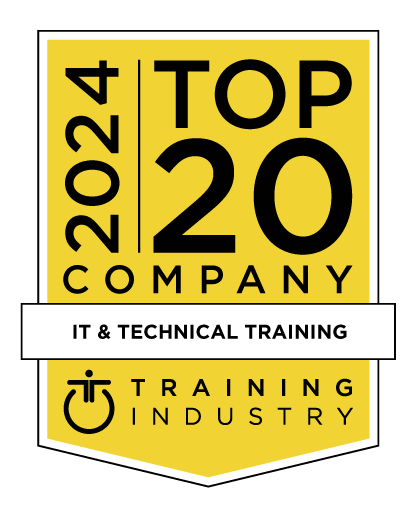title
Please take a moment to fill out this form. We will get back to you as soon as possible.
All fields marked with an asterisk (*) are mandatory.
Implementing and Operating Cisco Enterprise Network Core Technologies (ENCOR)
Course Description
Overview
The Implementing and Operating Cisco Enterprise Network Core Technologies (ENCOR) training gives you the knowledge and skills needed to configure, troubleshoot, and manage enterprise wired and wireless networks.You’ll also learn how to implement security principles, automation, and programmability within an enterprise network, and overlay network design by using Cisco SD-Access and SD-WAN solutions.
This training prepares you for the 350-401 ENCOR v1.1 exam. If passed, you earn the Cisco Certified Specialist – Enterprise Core certification and satisfy the core exam requirements for the Cisco Certified Network Professional (CCNP) Enterprise, Cisco Certified Internetwork Expert (CCIE) Enterprise Infrastructure, and CCIE Enterprise Wireless certifications.
This training also earns you 64 Continuing Education (CE) credits toward recertification.
Objectives
- Configure and implement identified solutions by applying planned implementation processes using Cisco IOS Software commands and applications.
- Verify appropriate show and debug commands and applications to ensure correct solution implementation and performance.
- Troubleshoot appropriate show and debug commands and applications to identify the cause of basic-level network issues and correctly implement a solution that ensures that the network is performing as desired.
- Illustrate the hierarchical network design model and architecture using the access, distribution, and core layers
- Compare and contrast the various hardware and software switching mechanisms and operation, while defining the ternary content addressable memory (TCAM) and content addressable memory (CAM), along with process switching, fast switching, and Cisco Express Forwarding concepts
- Troubleshoot Layer 2 connectivity using virtual local area networks (VLANs) and trunking
- Implement redundant switched networks using Spanning Tree Protocol (STP)
- Troubleshoot link aggregation using EtherChannel
- Describe the features, metrics, and path selection concepts of Enhanced Interior Gateway Routing Protocol (EIGRP)
- Implement and optimize Open Shortest Path First (OSPF)v2 and OSPFv3, including adjacencies, packet types, areas, summarization, and route filtering for internet protocol (IP)v4 and IPv6
- Implement External Border Gateway Protocol (EBGP) interdomain routing, path selection, and single and dual-homed networking
- Implement network redundancy using protocols including Hot Standby Routing Protocol (HSRP) and Virtual Router Redundancy Protocol (VRRP)
- Implement internet connectivity within enterprise using static and dynamic Network Address Translation (NAT)
- Describe the virtualization technology of servers, switches, and the various network devices and components
- Implement overlay technologies, such as Virtual Routing and Forwarding (VRF), Generic Routing Encapsulation (GRE), virtual private network (VPN), and Location Identifier Separation Protocol (LISP)
- Describe the components and concepts of wireless networking including radio frequency (RF) and antenna characteristics, and define the specific wireless standards
- Describe the various wireless deployment models available, including autonomous access point (AP) deployments and cloud-based designs within the centralized Cisco Wireless LAN Controller (WLC) architecture
- Describe wireless roaming and location services
- Describe how APs communicate with WLCs to obtain software, configurations, and centralized management
- Configure and verify Extensible Authentication Protocol (EAP), WebAuth, and pre-shared key (PSK) wireless client authentication on a WLC
- Troubleshoot wireless client connectivity issues using various available tools
- Troubleshoot enterprise networks using services such as Network Time Protocol (NTP), Simple Network Management Protocol (SNMP), Cisco Internetwork Operating System (Cisco IOS®) IP Service Level Agreements (SLAs), NetFlow, and Cisco IOS Embedded Event Manager
- Explain the use of available network analysis and troubleshooting tools, which include show and debug commands, as well as best practices in troubleshooting
- Configure secure administrative access for Cisco IOS devices using the command-line interface (CLI) access, Role-Based Access Control (RBAC), access control list (ACL), and Secure Shell (SSH), and explore device hardening concepts to secure devices from less secure applications, such as Telnet and HTTP
- Implement scalable administration using authentication, authorization, and accounting (AAA) and the local database, while exploring the features and benefits
- Describe the enterprise network security architecture, including the purpose and function of VPNs, content security, logging, endpoint security, personal firewalls, and other security features
- Explain the purpose, function, features, and workflow of Cisco Catalyst Center™ Assurance for intent-based networking (IBN), network visibility, proactive monitoring, and application experience
- Describe the components and features of the Cisco SD-Access solution, including the nodes, fabric control plane, and data plane, while illustrating the purpose and function of the virtual extensible LAN (VXLAN) gateways
- Define the components and features of Cisco SD-WAN solutions, including the orchestration plane, management plane, control plane, and data plane
- Describe the concepts, purpose, and features of multicast protocols, including Internet Group Management Protocol (IGMP) v2/v3, Protocol-Independent Multicast (PIM) dense mode/sparse mode, and rendezvous points
- Describe the concepts and features of Quality of Service (QoS), and describe the need within the enterprise network
- Explain basic Python components and conditionals with script writing and analysis
- Describe network programmability protocols such as Network Configuration Protocol (NETCONF) and Representational State Transfer Configuration Protocol (RESTCONF)
- Describe application programming interfaces (APIs) in Cisco Catalyst Center and Cisco Catalyst SD-WAN Manager
Related Courses
-
Implementing and Administering Cisco Solutions (CCNA)
CSC-CCNA- Duration: 5 Days
- Delivery Format: Classroom Training, Online Training
- Price: 4,195.00 USD
-
Implementing Cisco Enterprise Advanced Routing and Services (ENARSI)
CSC-ENARSI- Duration: 5 Days
- Delivery Format: Classroom Training, Online Training
- Price: 4,295.00 USD
Self-Paced Training Info
Learn at your own pace with anytime, anywhere training
- Same in-demand topics as instructor-led public and private classes.
- Standalone learning or supplemental reinforcement.
- e-Learning content varies by course and technology.
- View the Self-Paced version of this outline and what is included in the SPVC course.
- Learn more about e-Learning
Course Added To Shopping Cart
bla
bla
bla
bla
bla
bla
Self-Paced Training Terms & Conditions
ONCE YOU ARE ENROLLED IN THIS COURSE YOU WILL NOT BE ABLE TO CANCEL YOUR ENROLLMENT. You are billed for the course when you submit the enrollment form. Self-Paced Virtual Classes are non-refundable. Once you purchase a Self-Paced Virtual Class, you will be charged the full price.
This is a Cisco Self-Paced virtual class; it is intended for students who do not need the support of a classroom instructor. If you feel you would better benefit from having access to a Subject Matter Expert, please check to see if an Instructor-Led version is available.
- Students will receive an access code within 1-3 business days.
- If purchasing a self-paced course for multiple students, the purchaser will receive the access codes and must distribute them individually to the students.
- Students have access to the course 24/7 and will need to read and follow all instructions carefully to complete the course successfully within their allotted time.
Q: How long do I have access to the course and the Labs within the course?
A: Labs are available for the length of your course subscription.
Q: Can I reset the course and start over?
A: No.
Q: Is there a time limit for the Trial (Demo)?
A: There is no expiration on registration to the trial versions. Access is capped not in time, but by the fact that only a select number of sections are unlocked within the content.'
Exam Terms & Conditions
Sorry, there are no classes that meet your criteria.
Please contact us to schedule a class.

STOP! Before You Leave
Save 0% on this course!
Take advantage of our online-only offer & save 0% on any course !
Promo Code skip0 will be applied to your registration
Purchase Information
title
Please take a moment to fill out this form. We will get back to you as soon as possible.
All fields marked with an asterisk (*) are mandatory.










